A Flag Puzzle For Independence Day
What do the US, Britain, Canada, and India have in common?
My cottage is on a big lake in eastern Ontario, Canada, not far north of the American border. Since the 19th century, loads of Americans have been coming here — first by boat and train, later by plane and car — to fish and swim and fall asleep in the sunshine.
Needless to say, although I’ll say it anyway, our American friends and neighbours are most welcome, as they always have been. The foul odours emanating from the White House since January do not change that in the least.
As my little demonstration of the continued amity between Canadians and Americans, the flag below is flying from my dock on this July 4th.
That said, I must admit it is possible, at least a little, that I am also flying this flag because I enjoy confusing my neighbours. For lots of people around the world, after all, this is a most confusing flag.
What do you immediately see? First, of course, it’s the thirteen red and white stripes of Old Glory, the flag of the United States, easily the most recognizable political symbol around the world since the Second World War.
But there in the canton — the upper left quadrant — is likely the second-most globally recognizable political symbol, Britain’s Union Jack, which held top spot for almost a century and a half until it was bumped down a notch by Old Glory.
Anyone who recognizes both symbols knows the United States was formed by British colonies which violently broke away from the Mother Country. They may also know the story of Betsy Ross and George Washington (which is almost certainly a fabrication.) They may even know that the flag with the “broad stripes” that kept waving even as bombs were bursting in air was flying over Baltimore as it was being pummelled by Britain’s Royal Navy during the War of 1812.
All of which makes the Union Jack and Old Glory a little like oil and water, the Maple Leafs and the Stanley Cup, or Donald Trump and decency: They just don’t go together.
Yet there they are on that flag. Together.
It’s worth exploring how that came to be because, like so much flag history, it reveals interesting facets of wider political and cultural history.
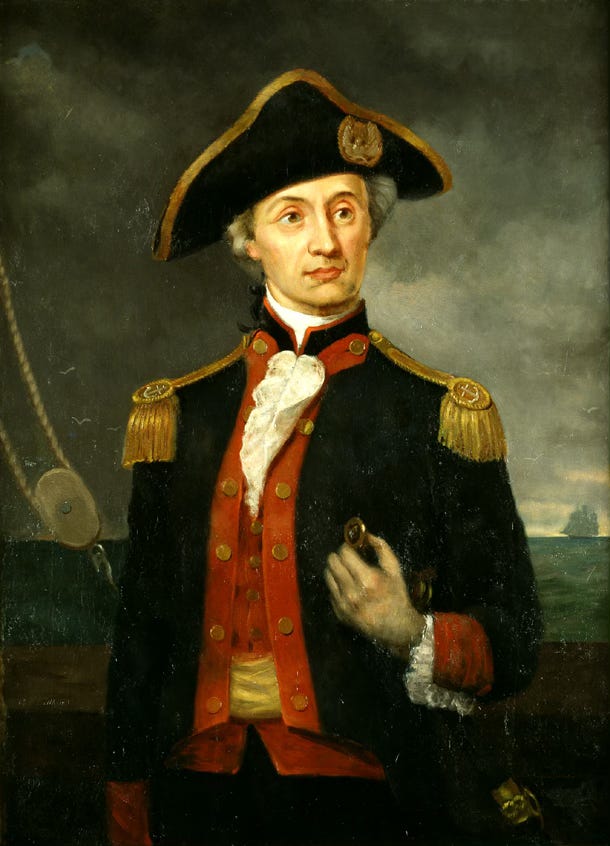
As I mentioned in my previous bout of flag dweebery, national flags as we know them today mostly evolved into being, like modern nations, in the 17th and 18th centuries. Prior to that, flags were primarily a concern of navies. While they sometimes held symbolic or patriotic meaning, they were mostly practical: Flags allowed others to see who was in command of a vessel from far away.
Of course to be seen at distance, flag designs had to be simple. And brightly coloured. As I mentioned in that earlier article, the English navy was organized into three squadrons as far back as the 16th century, with each squadron identified by the flag colour it flew — white, red, or blue. They also started adding England’s Cross of St. George to the canton. And because navies love nothing more than terminology that confuses non-sailors, they didn’t call these flags “flags.” If flown at the stern, where the main flag flew, it was an “ensign.” Flown on a “jackstaff” at the bow, it was a “jack.” Hence, we get terms later made famous, like “Red Ensign” and “Union Jack.”
In 1606, when James VI of Scotland inherited the throne of England, flag designers and heralds got busy making designs that merged Scottish and English symbols. On ships, Scotland’s Cross of St. Andrew was added to the English St. George’s Cross in the canton. The result were the White, Red, and Blue Ensigns on ships that, in the following centuries, became familiar all over the world.
Which brings me to the Revolutionary War.1
Almost inevitably, given the primacy of maritime concerns in matters vexillological, it was the new Continental Navy that first designed an American flag. That flag on my dock? That’s it. It was called the Continental Union Flag. Or, much later, the Grand Union Flag.
It remained the de facto flag of the American rebels and their cause until 1777, when it was replaced by the same design but with the Union Jack swapped out for a field of blue with 13 stars representing the 13 colonies.
Here it is in a later painting of the USS Columbus with, on the left, the captured British brig HMS Lord Lifford. Note the Red Ensign flying upside down on the captured ship to show it had been taken.
What’s of interest here — meaning “of interest to more than vexillological nerds” — is that the first national flag of Washington and the Patriots — or “that rebel and the other rebels,” from the British perspective — so prominently features the Union Jack. That hints at something meaningful.
Later generations of Americans quite successfully developed a separate national identity and symbols to go with it, and to an extent modern Americans sometimes project that entirely separate identity backwards in time, imaging the Continental Army and Navy fighting to throw off the yoke of the perfidious foreigners, the British. In reality, Washington and Company considered themselves British. In justifying their rebellion, they cited their rights “as Englishmen.” They appealed to British law and history. They even harkened back to Magna Carta as the great landmark establishing that an English king’s power was not absolute. (The latter, incidentally, was mostly an invention of the English Civil War of the 17th century, another event the Patriots often cited.) To modern Americans, this is all ancient and obscure history in a foreign country, but to Washington and his contemporaries it was recent history. And it was their history.
For them, there was no contradiction in flying the British flag within their new flag. They were Englishmen and Britons. The Union Jack was their symbol. And remember, at this early stage of the war, it was not clear that a total break with Britain was the goal. Many Patriots still hoped for something like what would later be called “Dominion” status or “Home Rule” within the British Empire. For those who hoped to achieve their political ends without completely severing ties with Britain, and who believed they were standing for British principles, the Union Jack in their own flag made perfect sense.
But now things get a less clear. Even today there is a little mystery about the remainder of the flag consisting of those stripes.
Compare the Continental Union Flag with the Red Ensign above. In a sense, they’re remarkably similar. Union Jack in the canton. Red over the rest. The only difference is the addition of some white stripes that turn the solid mass of red in the Red Ensign to a series of 13 red and white stripes.
Who chose that design? Why? Historians have searched extensively but we don’t know the full story. But two explanations have often been often been cited. They’re both plausible.
To deliver the first, I’ll quote none other than the Right Honourable Stephen Harper, former prime minister of Canada, who, I was recently delighted to learn, published a book about the flags of Canada this year. The fact that a book about the flags of Canada contains the story of the first American flag is suggestive of how intertwined British, Canadian, and American flags — and history — really are.
Known as the Grand Union Flag or Continental Colors, it contained the older Union Jack in the canton with the field broken up by six white horizontal stripes sewn into a readily available Red Duster [an old nickname for the Red Ensign]. The resulting thirteen stripes were a clear reference to the thirteen rebel colonies.
So in this telling, the first American flag is simply a modestly modified Red Ensign — the same Red Ensign which evolved through many forms in Canada and ultimately inspired the current national flag of Canada, the famous red maple leaf with red bars.
But there is another argument about the origins of the Continental Union Flag.
Have a look at the following:
This flag dates from later than 1801, when the Union Jack was modified to add the crossed red stripes of St. Patrick’s Cross to signify the addition of Ireland to the Union. The earlier version of the Union Jack did not have those stripes. So the earlier version of the flag above was essentially identical to the Continental Union Flag.
But the flag above is not the Continental Union Flag. It is the flag of the East India Company, which was founded in 1601, ruled India for centuries, and, at the time of the American War of Independence, accounted for half the world’s trade. It was a colossus. Every educated man with property in the English-speaking world — which described all the leaders of the rebellion in America — was very familiar with the East India Company.
And the flag of the East India Company was identical to the first American flag. There is even a widely repeated statement by Benjamin Franklin urging George Washington to adopt the East India Company flag. So is it case-closed?
No. Historians have looked for the original source of that Franklin statement and come up with nothing. Also, the East India Company was anything but popular in colonial America. The tea that was famously dumped in Boston harbour? That was their tea. The East India Company didn’t even fly that flag on the American side of the Atlantic.
“Thus, the likeness is almost certainly coincidental,” concludes Stephen Harper. “The Red Ensign, by contrast, was already being used as the basis of some colonial flags and rebel military banners.”
I think Harper is too emphatic. So do lots of other flag nerds and some of the many historians who have explored this. It’s more reasonable to say the American flag was not simply copied from the East India Company, but the most unusual feature of that flag — thirteen horizontal red and white stripes, starting and ending with red — must surely have been known and mattered to whoever made the design decisions. The fact that the stripes totalled thirteen, the number of the rebelling colonies at that point — they hoped the British colonies in what is now Canada would join them — meant an existing design idea neatly fit current political circumstances. So when they later said the number of stripes represented the thirteen colonies, it was a nifty story, but also a bit of a post facto rationalization of the sort often encountered around design decisions. (Ask a marketing company to explain particular choices behind the design of a corporate logo and you’ll hear the same sort of story-telling.)
In any event, the two explanations are not — sorry, prime minister — mutually contradictory. In fact, I think a fusion of the two is the most plausible explanation: Both the East India Company design and the Red Ensign were well known in the thirteen colonies and so the design of the Continental Union Flag felt familiar yet distinct to any American ship captain. And that’s what mattered. Remember, this wasn’t the product of a committee of graphic artists and politicians. It was a naval ensign. It had a job to do. And it did it.
The small handful of flag dweebs who are still reading are invited to express their umbrage in the comments.
But as fascinating as the details are to flag dweebs, the bigger point is one on which Stephen Harper is absolutely right: The flags of Britain, Canada, and the United States are all cousins, sharing deep, intertwined roots. As do Britain, Canada, and the United States. Many of us may not recognize this simple fact, particularly Americans who enjoy imagining themselves to be unique in the world. But facts are obstinate.
In any event, as you may have realized, flying that flag on my dock as a friendly nod to my American friends and neighbours assumes a high degree of historical literacy in said friends and neighbours. And as you will certainly have realized, that omits the vast majority of Trump supporters.
If they don’t feel the love emanating from my dock, I shall not be displeased.
To the rest, I say: God save the King, God bless the USA, and happy Independence Day.
Since I’ve gone all-in on dweeb, I will note that “Revolutionary War” is a misnomer. It was a war for independence, not social transformation, as the outcome of the war — the colonial elite became the national elite — demonstrates amply. In Britain, the conflict is more commonly called the American War of Independence, which is just objectively better. Sorry, Yanks, I know it’s your war and all, but you’ve got the name wrong.

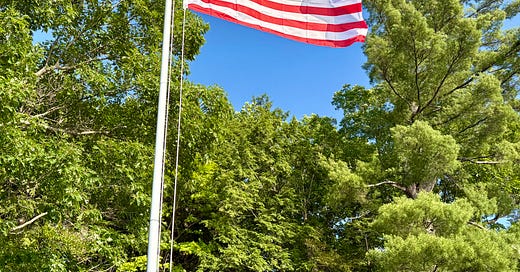



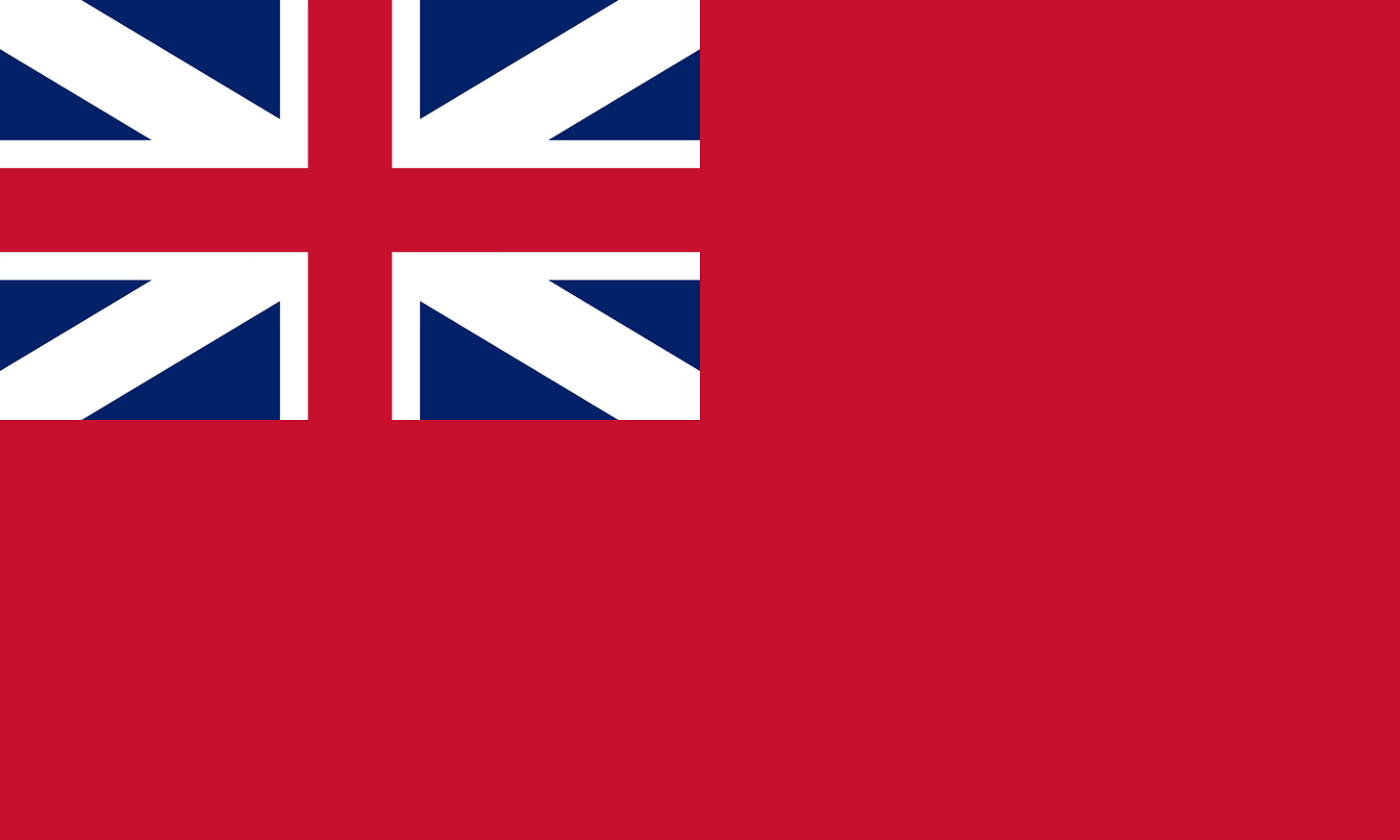
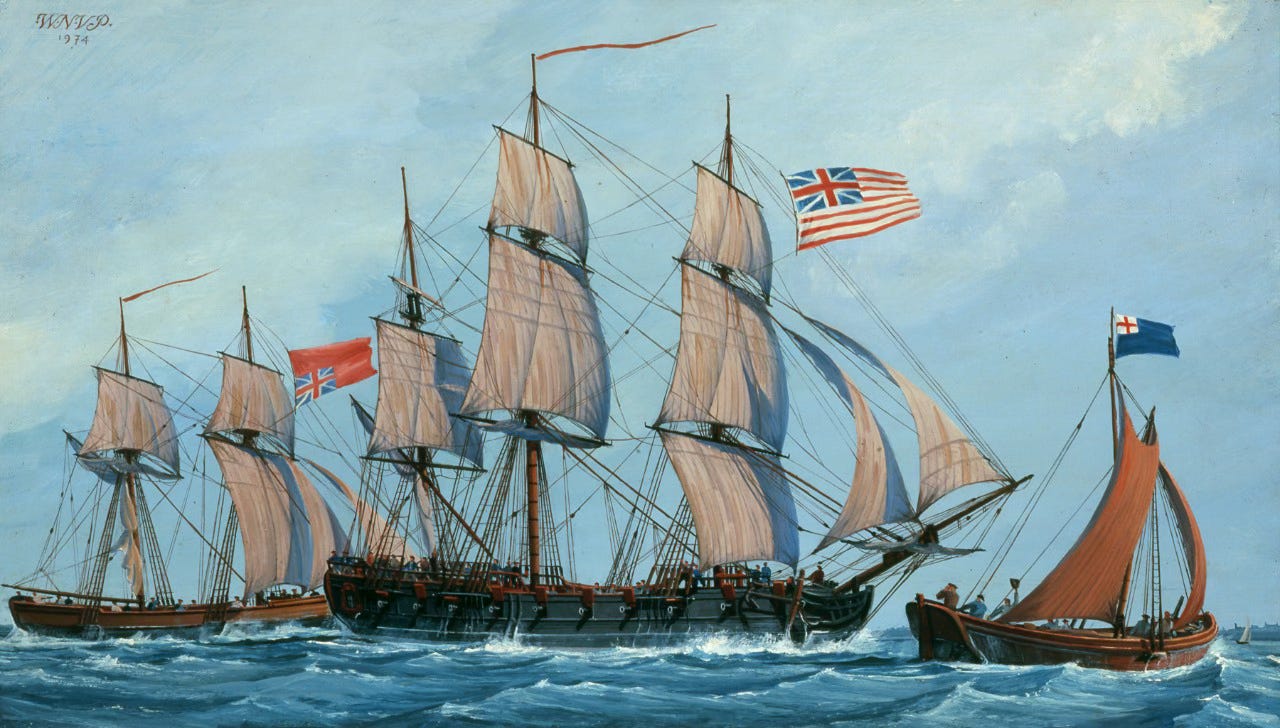
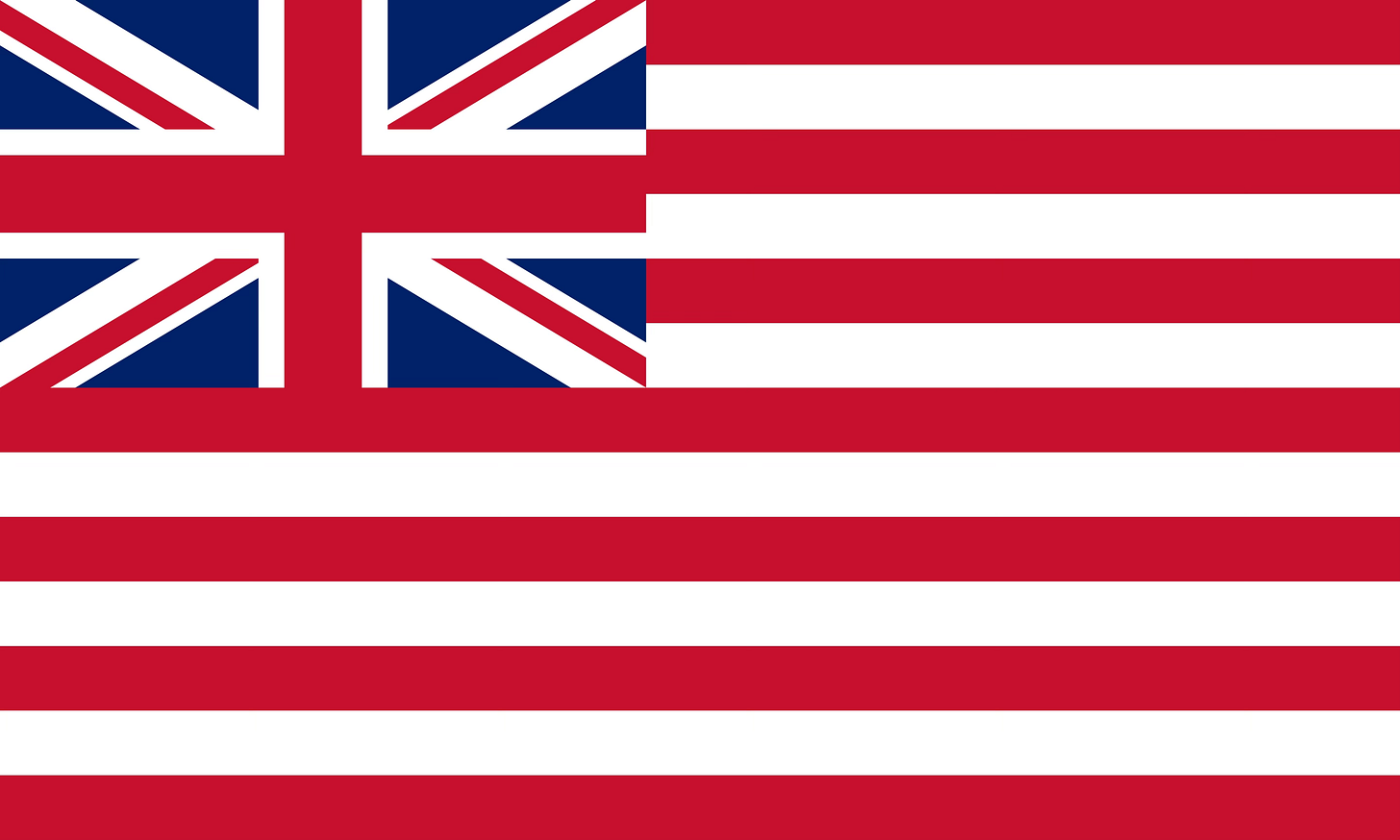
Super interesting article. Sometimes we need a historian to remind us of what came before the current swirling maelstrom of social media “knowledge”. Thanks Dan!
Enjoyable article. Learned a lot. Don't assume the folks that voted for Trump are "Trump supporters"... a world of difference.